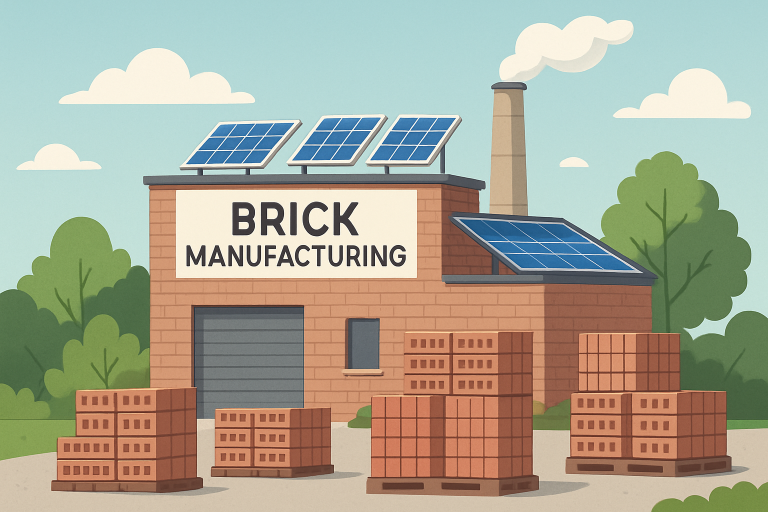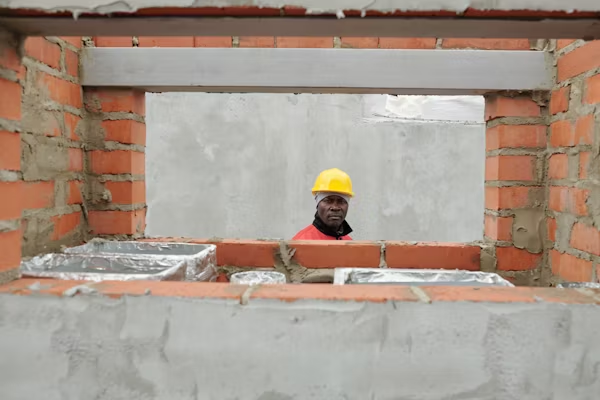The Role of Bricks in Modern Infrastructure
Bricks remain one of the most trusted building materials, providing exceptional durability and versatility for both traditional and contemporary construction. Today’s infrastructure relies heavily on bricks, not only for their strength but also for their role in energy efficiency. Modern bricks contribute significantly to the thermal mass of buildings, which helps regulate indoor temperatures and reduce energy costs. Brick manufacturing also enables the creation of fire-resistant and structurally reliable buildings, making them a staple in the construction of safe, long-lasting structures.
Bricks help achieve architectural integrity and longevity in urban and rural developments alike. They are effective in both new builds and restoration projects, supporting sustainable growth initiatives that prioritize low-maintenance and environmentally friendly structures.
Advancements in Sustainable Brick Production
Sustainability within brick production is evolving rapidly. Many manufacturers are deploying energy-efficient kilns and introducing recycled materials into their processes. For example, including fly ash or other industrial by-products in the brick-making mix reduces demand for newly mined resources while helping divert waste from landfills. Alternative fuels and renewable energy sources are also becoming more common, mitigating the environmental impacts historically associated with traditional firing techniques.
Green certifications, such as LEED, now reward projects incorporating sustainably made bricks, further incentivizing producers to innovate. These efforts ensure that brick production aligns with global environmental goals while meeting local building requirements.
Economic Impact of Brick Manufacturing
Besides environmental benefits, the brick industry powers local economies in several ways. Manufacturing plants often serve as major employers in their communities, supporting a broad range of skilled and unskilled labor. Facility modernization projects introducing automation and additional lines create fresh job opportunities, from supply chain management to equipment maintenance and industrial insulation, which is critical in optimizing energy use and ensuring worker safety in high-temperature environments.
The ripple effect of a healthy brick sector extends to supporting industries such as logistics, equipment manufacturing, industrial insulation, and construction services. As regions invest in infrastructure, the demand for bricks directly contributes to economic vitality and workforce stability.

Technological Innovations in Brick Manufacturing
The adoption of advanced technology is transforming how bricks are made. Automation and artificial intelligence now streamline routine processes, allowing for more precise quality control and minimizing avoidable waste. Robotic arms and conveyor systems are increasingly common in brick packaging and handling, limiting human error and increasing operational safety.
Innovations such as real-time monitoring of kiln temperatures, automated defect detection, and the use of big data analytics are enhancing efficiency across the industry. By leveraging these technologies, manufacturers can swiftly adapt to the ever-increasing demands of modern infrastructure projects.
Environmental Challenges and Solutions
Despite its many benefits, traditional brick manufacturing remains energy-intensive, with notable emissions of greenhouse gases. To address these challenges, industry leaders are investing in alternative firing technologies, such as electric kilns powered by solar or wind energy. These changes drastically decrease reliance on fossil fuels during brick production.
In addition, manufacturers are instituting waste reduction strategies like recycling broken or defective bricks. Improved water usage in clay processing and the use of pre-treated, less energy-demanding materials are also helping to ease the environmental burden.
Bricks in Sustainable Urban Development
As cities and towns expand, the importance of sustainable materials becomes even clearer. Bricks have a significant edge for green urban design with their proven resilience and reduced life-cycle maintenance costs. Their ability to optimize building energy consumption and enhance acoustic performance makes them a primary choice for structures seeking high performance and longevity.
Sustainable brick usage also aligns with policies that reduce cities’ carbon footprints. Municipal planners increasingly specify bricks for infrastructure developments such as transit centers, schools, and affordable housing, where durability and low maintenance are crucial for community well-being.
Future Outlook for Brick Manufacturing
Brick manufacturing’s future is rooted in continuous improvement and sustainability. Research is underway to discover new, eco-friendly raw materials and even more energy-efficient production methods. Collaborative initiatives between manufacturers, environmental organizations, and policymakers are producing comprehensive standards that maximize sustainability without compromising product quality.
Additionally, as smart city technologies take hold, integrating smart bricks—bricks embedded with sensors—could further enhance building performance and monitoring, opening new avenues for infrastructure intelligence and proactive maintenance.
Conclusion
Brick manufacturing remains vital at the intersection of infrastructure development and sustainable practice. By combining technological progress with a commitment to environmental stewardship, the industry is equipped to meet the evolving needs of modern construction. Ongoing innovation and responsible manufacturing will ensure that bricks remain a fundamental contributor to infrastructure growth and a more sustainable built environment for future generations.

